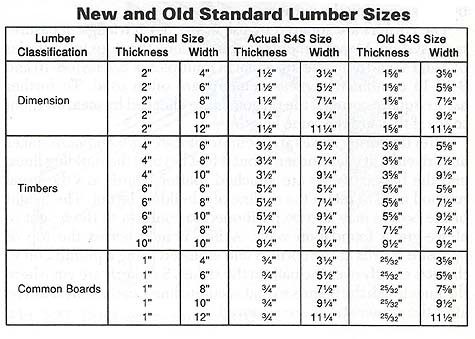

Two words, timber and lumber, are commonly used to describe the principal material used by carpenters. In the early stages of lumber production the word timber is usually applied to wood while in its natural state. Wood after cutting and sawing into standard commercial pieces is called lumber.
Stock lumber may be green, meaning the wood contains a large percentage of its natural moisture, or it maybe seasoned. Seasoning is the process, either naturally or by exposure to heat, of removing about 85% of the moisture contained in freshly cut timber. Lumber is usually classified according to the three types into which it is rough sawed. These are: dimension stock, which is 2 inches thick and from 4 to 12 inches wide; timbers, which are 4 to 8 inches thick and 6 to 10 inches wide; and common boards, which are 1 inch thick and 4 to 12 inches wide.
Rough lumber is dressed or surfaced by removing about 1/8 inch from each side and about 3/8 inch from the edges. This planing operation is called dressing or surfacing, and the letter "D" for dressed or "S" for surfaced is used to indicate how many sides or edges are planed. For example, D1S or S1S indicates one side has been planed. Lumber planed on both sides and edges is designated S4S.
Traditional practice in sawmill operation was to saw logs to nominal dimensions, i.e., dimension stock was sawed to 2-inch thickness, boards to 1 inch, etc. Seasoning or drying further reduced the thickness roughly 1/8 inch, and the width a lesser amount. The Table below lists the dimensions of lumber produced as standard during the many years this practice was followed. The old standard sizes are shown in the Old S4S column.
The practice of sawing to nominal dimensions is no longer followed. Instead, finished standard dimensions have been established and are used to determine sawmill dimensions. This allows more efficient use of logs, as lumber can be rough sawed to lesser dimensions, providing only enough extra material to surface plane to the new, reduced standard finished dimensions. The present standard lumber sizes are listed in the Actual S4S column in Table 1 (below).

Table 1. New and Old Standard
Lumber Sizes